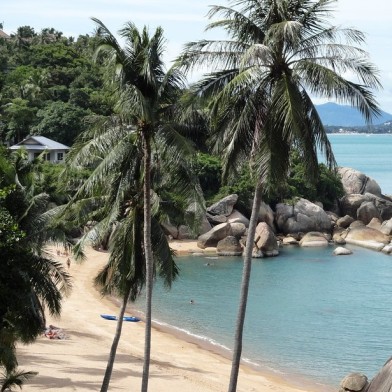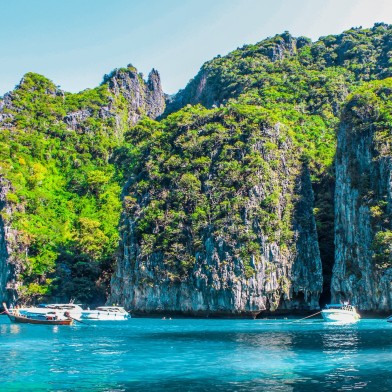After three years of Covid isolation, China's outbound tourism has ramped up as tourists pack their bags and set their sights on holiday destinations. But some South East Asian countries are learning that travel demand post-pandemic may shape up differently than before. Gary Bowerman reports.
On 29 June, Malaysia’s Tourism Minister Tiong King Sing personally intervened at Kuala Lumpur International Airport to release a Chinese citizen detained by immigration officers. Local media debated whether the Minister had security clearance to enter the arrivals hall, while social media speculated about the reasons the Chinese visitor was being denied entry.
Fast forward to 25 September. Thailand’s Prime Minister Sretta Thavisin personally greeted the first Chinese tourists arriving at Bangkok’s Suvarnabhumi International Airport after his government granted a visa waiver to attract more visitors from China. Nine days later, he stood at the hospital bedside of a Chinese citizen injured in a shooting incident at a Bangkok mall, in which another Chinese visitor was killed, during the October Golden Week holiday.

The halls of Suvarnabhumi Airport at sunset in Bangkok, Thailand. Image: Wikimedia Commons
These contrasting events highlight the sensitive diplomacy surrounding Chinese tourism in South East Asia. The region received 32.3 million Chinese visitors – or 23% of all arrivals in 2019, the year before Covid brought travel to a halt. That total almost doubled from 16.4 million in 2013. Chinese tourists are coveted for their spending power, and for the related economic eco-system, including airlines, hotel investments and property purchases, they occupy.
Tourism, Trade & Diplomacy
South East Asian destinations compete vigorously to attract Chinese tourists; Thailand welcomed 11 million Chinese visitors in 2019, and Malaysia 3.1 million. The bigger picture is more complex, transcending visitor numbers and expenditure. Trade and investment ties, strategic politics, diplomacy and tourism are intertwined in complex bilateral relationships.
Partly, this is because China’s government views its tourism interests through a different lens. Across Asia, inbound visitor and domestic tourism spend are key metrics governments use to benchmark their visitor economies. Maximising annual arrivals – particularly from key markets like China – is considered an intrinsic driver of economic growth, job creation and securing inbound investment.
By contrast, inbound tourism has derived less utility for China’s government, although boosting the visitor economy is enshrined in the 14th Five-Year Plan (2021-2025). Instead, it leverages the world’s largest outbound market in its foreign policy. Tourism matters because it is the fulcrum of broader-based governmental relations.
President Xi Jinping became the first Chinese leader to quantify tourism output within a foreign policy context in a speech at the Boao Forum for Asia Conference in 2015. “The Chinese economy will bring more opportunities of trade, growth, investment and cooperation for other countries in Asia,’ he said. “In the coming five years, China will import more than US$10 trillion of goods, Chinese investment abroad will exceed US$500 billion, and more than 500 million outbound visits will be made by Chinese tourists.”

Outbound tourists from China play a part in the country's foreign policy views. Image: Wikimedia Commons
The Dragon Awakens
After three years of Covid isolation, China began restoring travel connections with the world on 8 January. It entered the pandemic as the world’s largest outbound market, generating 170 million cross-border trips in 2019. Despite the Covid Zero policy shuttering international travel from March 2020 onwards, the scale of domestic travel meant China comfortably retained its status as the world’s second largest air market. Consequently, nations across Asia Pacific hoped a swift unlocking of ‘revenge travel’ demand would bring comparative volumes of Chinese leisure and business visitors as in 2019. Historical revisions of 2023 will conclude those expectations were simply too high.
While the regional tourism sector awaited the return of Chinese tourists, initial air travel was in the reverse direction. During spring 2023, a procession of South East Asian leaders arrived in Beijing to meet President Xi Jinping. These included experienced hands, like Singapore’s Prime Minister Lee Hsien Loong, Cambodian Prime Minister Hun Sen and Indonesian President Joko Widodo, plus recently elected Philippine President Ferdinand Marcos Jr and Malaysian Prime Minister Anwar Ibrahim. They shared similar agendas, including regional defence and security, trade and investment and infrastructure funding. Scaling up air connectivity and tourism were also high priorities.
China’s international travel return reinvigorated the role of tourism for regional growth. The Asian Development Bank noted in April that China’s reopening could “cause a faster-than-expected rebound”. Regional growth was forecast to expand from 4.2% in 2022 to 4.8% in both 2023 and 2024, driven by an upturn in “consumption, tourism and investment.”
October Golden Week Underwhelms
Six months later, media across South East Asia is lamenting a slow recovery of Chinese tourism – particularly during the eight-day October National Holiday. “Vietnam no longer top choice for Chinese tourists,” headlined VnExpress. “Where are the China tourists?” asked The Business Times in Singapore. “Cambodia is eager to invite more Chinese tourists,” noted Khmer Times.

One of the Siem Reap- Phnom Penh intercity express buses runs on the road to Kompong Phluk in Cambodia. Image: Wikimedia Commons
The most downbeat response is in Thailand, where uncertainly pervades after the fatal shooting of a Chinese citizen and the injuring of another at Siam Paragon mall in Bangkok. Thailand’s tourism authority slashed its 2023 forecast for Chinese arrivals from 5 million to 4 million.
China’s outbound revival has been “gradual,” says Jesper Palmqvist, Singapore-based Asia Pacific Director of STR, a hotel data consultancy. “It remains a big unknown factor. International air capacity will keep growing but it will take time to fully recover.”
Constrained flight availability is a critical factor. In the year to 8 October, carriers operated 268,000 international flights, a decrease of 64% from the same 2019 period. On a week-to-week basis, China’s international seat capacity has reached just 57% of the 2019 level.
A New Tourism Competitor
Tourism boards willing Chinese tourists to boost their economies face a new competitor: China. The Golden Week generated 826 million domestic travel trips. During the Covid era, Chinese cities, tourism destinations, airlines, hotels, OTAs and car rental firms used Chinese social media apps to great effect to meet the changing travel preferences of consumers.
“During the three years when people weren’t travelling internationally, there was a big shift to an internal focus, especially on social media,” says Yereth Jansen, a Shanghai-based travel industry consultant. “Home-grown brands are thriving by understanding China's consumer behaviours at ‘China Speed’.”
With attentions turning to 2024, the biggest learning for regional destinations in 2023 has been managing expectations. An expansion of Chinese tourism into South East Asia is underway, but the “big unknown factor” remains uppermost in the minds of governments, tourism boards and the travel industry.
- Asia Media Centre


